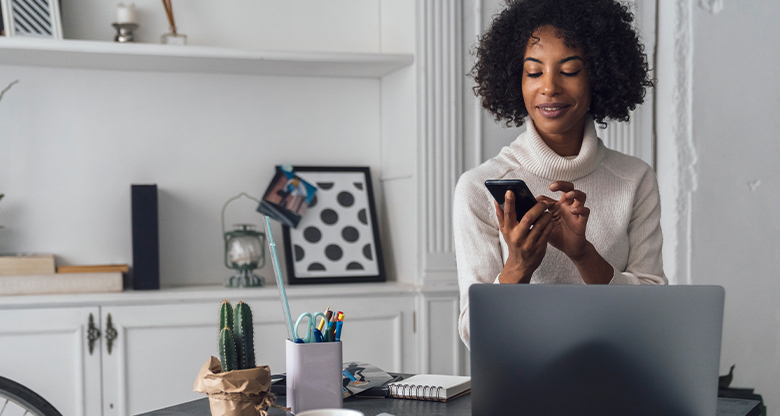Working from home has become a new reality for many of us and will hopefully give us greater flexibility leading into the future. But many homes aren’t set up for a safe and effective home office. If you need or want to work from home, you may want to consider taking extra care, to help ensure you’re not putting yourself and your home at risk.
Setting up to avoid pain and strain
A well-designed, ergonomic office can help minimise pain and repetitive injuries, especially when you’re sitting for a long time. Worksafe QLD recommends:
- Your chair and desk should allow you to keep a neutral posture
- You should be able to sit comfortably with your knees under the table, and feet on the floor or on a footrest
- Pay attention to your monitor height – ensure you don’t need to tilt your head to read your screen
- You may also like a keyboard and mouse with ergonomic features, which may reduce the risk of repetitive strain
Remember, sitting for too long may have negative effects on your health and fitness. So consider setting a reminder on your phone to take regular breaks. Alternating between standing and sitting may also help you avoid neck or back strain.
Get prepared
If you’re working from home – or even if you’re not – you might want to think about preparing in case things go wrong. A well-stocked first-aid kit is a sensible idea in any home, as are fire extinguishers and working fire alarms. You may also want to consider a list of important contact numbers, such as emergency services and energy providers (in case of a blackout).
Powering on
If you don’t have enough power outlets, consider using a power-board with surge protection and safety switches. Damaged electrical cords, double adaptors, and overloaded power-boards can cause electric shocks and fires.
Remember, electrical cords can also be a trip hazard – so keep cords flat and out of your path, but not under rugs where they may overheat. It can also be a good idea to switch off your equipment at the end of the day, to avoid electrical hazards – and save on your power bill.
Staying distanced, not isolated
Working from home doesn’t mean you have to become a recluse. As more people swap the office for the lounge room, there are more opportunities and tools that can help us stay in touch.
For example, you could set up an online breakfast, lunch or coffee meetings with your colleagues to share work news and boost rapport, or chat to friends and family during breaks. And while lockdowns and restrictions continue to be a challenge for many, there are ways to continue social activities outside your work hours to help keep you connected.
Is your home office covered?
The cost of personal office equipment, like laptops, monitors, printers and furniture, all adds up. You may want to consider contents insurance for cover against events like theft, fire, cyclone and storm. If you already have contents insurance, it may be worth checking office equipment is covered and that you have adequate cover to meet your needs.

